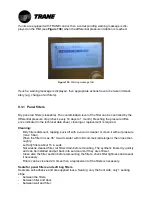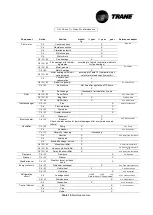
o
Removed fibers and dust at the exchanger inlet with a brush.
o
Clean oils and fats with hot water, household cleaners or degreasing steam.
-
Check for proper operation of differential pressure switch
– for function refer to
chapter
7.6 (Differential pressure restriction for plate heat exchangers)
.
-
If there is a bypass damper, please refer to
chapter 9.6 (Dampers)
.
9.9.2 Heat wheels
Check the drive unit according to manufacturer's instructions.
In general:
-
The construction of the storage mass is nearly complete self-cleaning.
-
The rotor can be cleaned with compressed air, water, steam and grease-dissolving
household cleaning products.
-
The sliding seal, which seals the rotor, is to check and adjust if necessary.
9.9.3 Heat pipes
Heat pipe components have no drive or moving parts, maintenance is limited to cleaning:
-
Clean the drain pan and check the siphon. Fill the siphon if necessary.
-
Fins cleaned by:
o
Compressed air against the air flow direction or
o
Spraying with low pressure water, if required add household cleaning detergent.
-
If bypass dampers exists, please refer to
chapter 9.6 (Dampers)
.
9.9.4 Accublocs
Electrical connection:
The accubloc is supplied including controller supplied loose (configured with default values),
including operating instruction. On site must be provided:
-
Power supply 3x400V (efficiency according to technical data sheet)
-
Control signal 0-10V
All bearings are self-lubricating ball bearings or bronze bearings. This should not be lubricat-
ed. It is important to ensure that the sensor is about 2 mm away from the engine. This can be
checked with a 2mm thick piece of sheet metal. If necessary, the distance can be readjusted.
The inner side of the sensor is accessible through the open damper with a wrench SW17.
Caution!
Switch off before installation and secure against accidental recon-
nection.
Summary of Contents for CCEB
Page 48: ...Figure 83 Pulling out the filters Figure 84 Pull out tool...
Page 74: ......





































